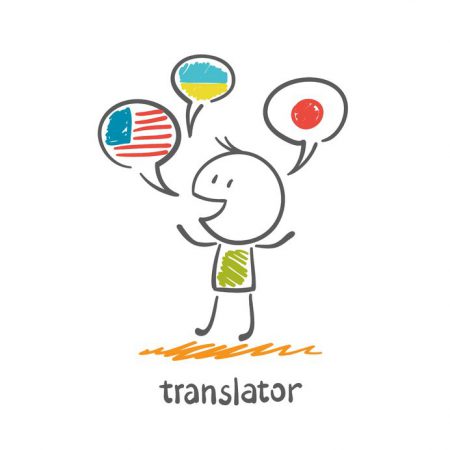
3 Elements of Translation: Adjectives, the Use of Gender, and Alphabets
by Chad Richardson
October 18, 2018
To some extent, translation is an intuitive thing. The translator sees a sentence in one language and, if they are fluent in another language, they immediately start translating it in their mind. In a way, translation can seem like a game in which you have to find the best possible version of that sentence in the other language. This is a challenging task but in an enjoyable way. The translator goes through a number of steps in their mind, trying to find the best possible translation. Here are some of the things they might have to think about:
- Adjectives: In certain languages, like English, the adjectives come before the noun. So you might say, “an extraordinary man” or “a pretty girl” or “a large house.” In all these cases, the adjectives precede the noun. If there’s more than one adjective, then they might be divided by a comma, depending on the case. But in French, longer adjectives come after the noun and short ones before the noun. So “an extraordinary man” becomes “un homme extraordinaire” while “a pretty girl” becomes “une jolie fille.” A translator has to make an immediate mental adjustment while translating such things.
- Masculine/Feminine: In a language like English, not everything has a gender. Sure, a man may have a gender and a woman may have a gender. But a cup doesn’t. Neither does a book or a pen. But there are certain languages in which every noun has a gender. In French, a cup is “une tasse” which is feminine. A book is “un livre” which is masculine. Plus, the adjective and verb applied to these nouns will also have to agree with their gender. So the whole sentence will, in effect, change due to the gender of the nouns inhabiting it.
- Alphabet: Different languages have different scripts and alphabets. If the translator is translating from English to Hindi, for example, they’ll have to switch alphabets completely. However, if they’re translating from English to French, then the alphabet remains more or less the same, with just a few accents added here and there. Of course, it may be more difficult to translate into a language where the alphabet is completely different but it also depends on the translator’s familiarity with both languages.
Although translation comes across as quite complex, given that you have to consider all these elements, for professional translators they make the changes in their minds automatically. Contact us to learn more about the process of translation.
Related Articles
Smart, Fun, and Fascinating Facts About the Use of Sign Language
Also known as ASL (or American Sign Language), this method of communicating with those who are either completely deaf or struggle with their hearing has been around for over two centuries. On the surface, watching those who silently speak, understand, and communicate with others using their hands may appear foreign to most, but it’s actually…
3 Traits for Healthier Meetings and Happier Employees
Have you ever sat in a meeting where you were suddenly jolted out of your daydream when someone asked for your opinion? Maybe you remember that meeting that seemed to drag on with no end in sight. Maybe you don’t remember the meeting at all. Did you ever leave a meeting wondering if you had…
Taking a Break to Manage Unsustainable Accelerated Growth
While growth is the ultimate reason people get into business, sometimes growing or expanding too quickly could lead to some unexpected complications. The challenge for any business owner is not to limit growth but to manage growth and capitalize on it if possible. The effects of unsustainable accelerated growth on your business could include: Having…
here
for you
We’d love to learn more about your translation and localization needs.